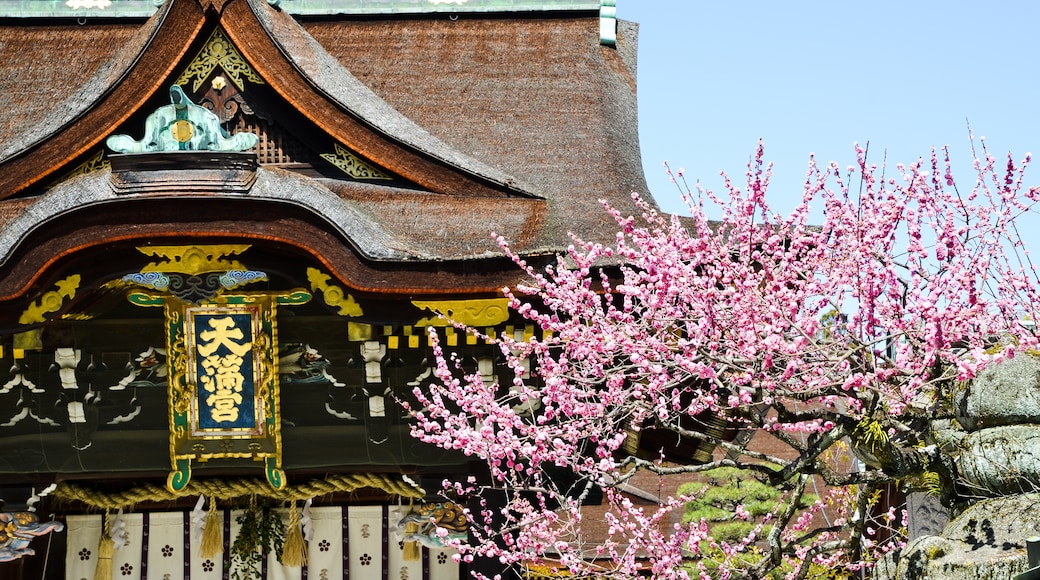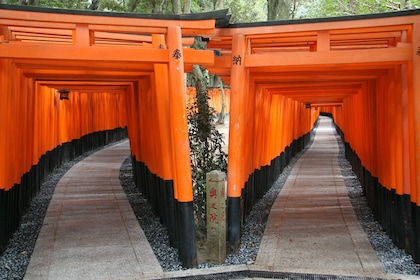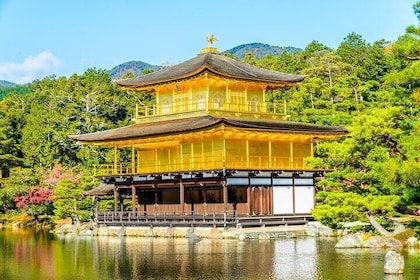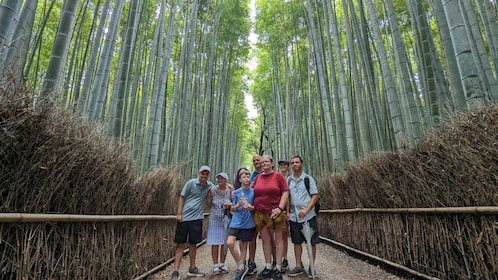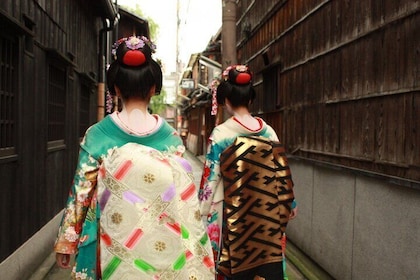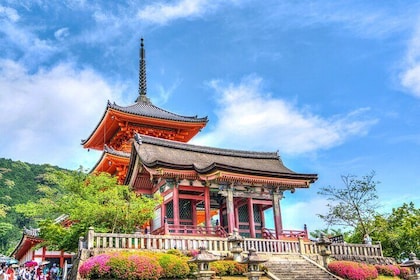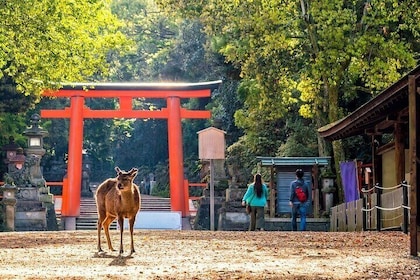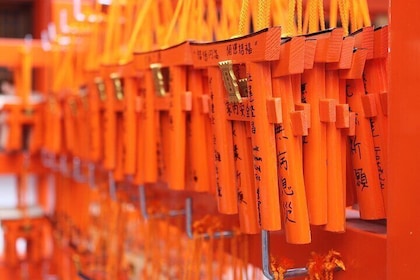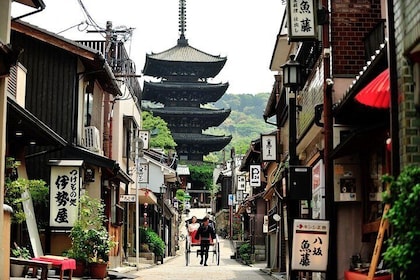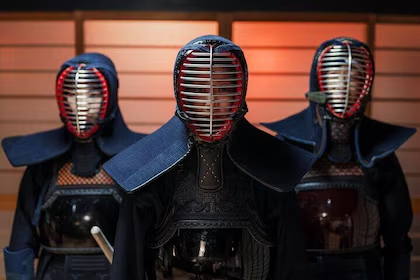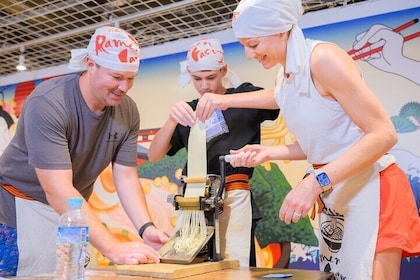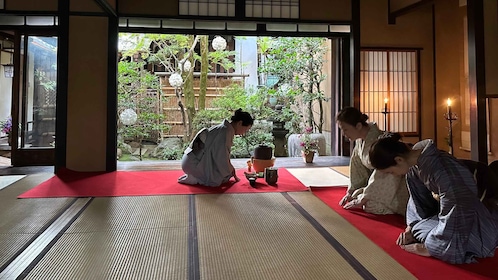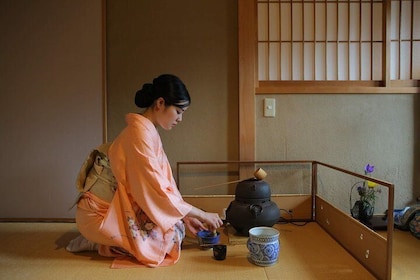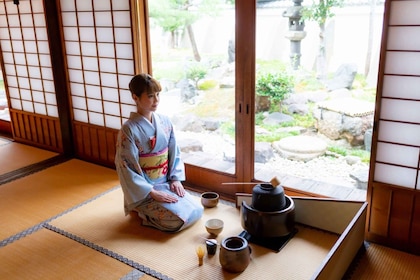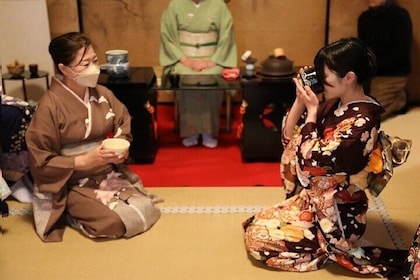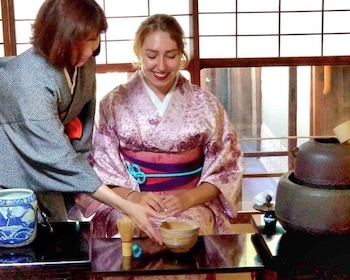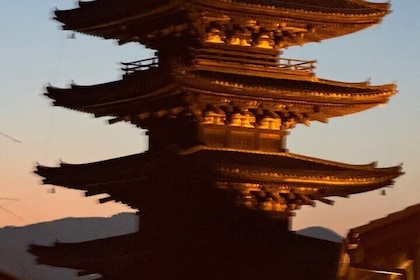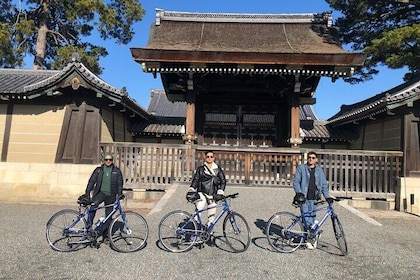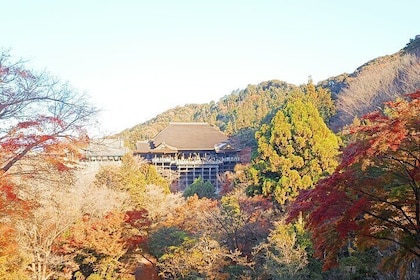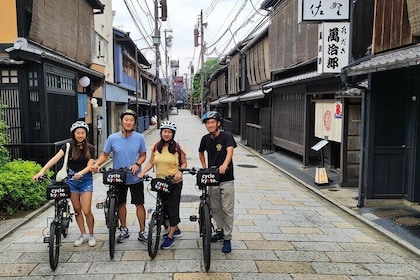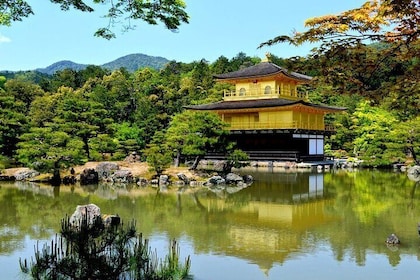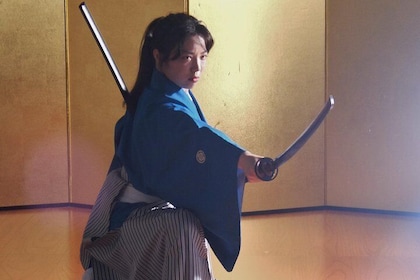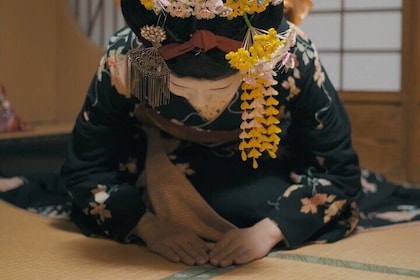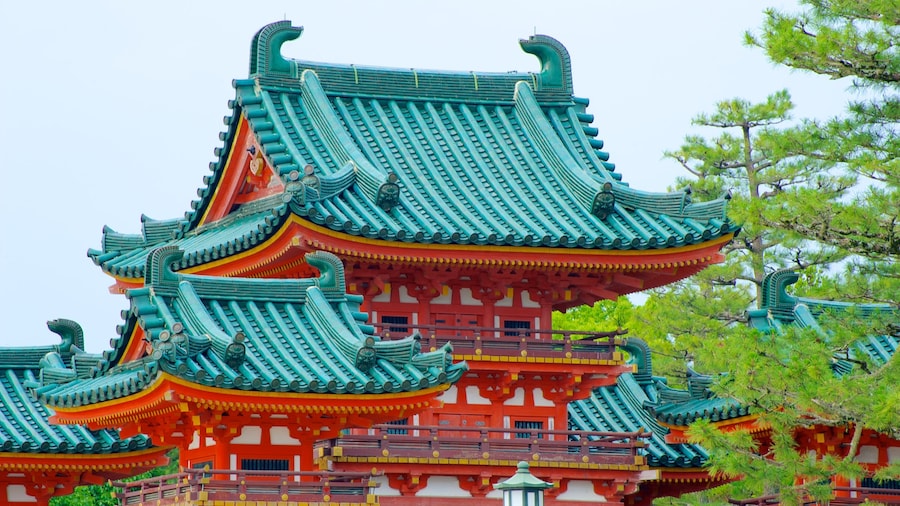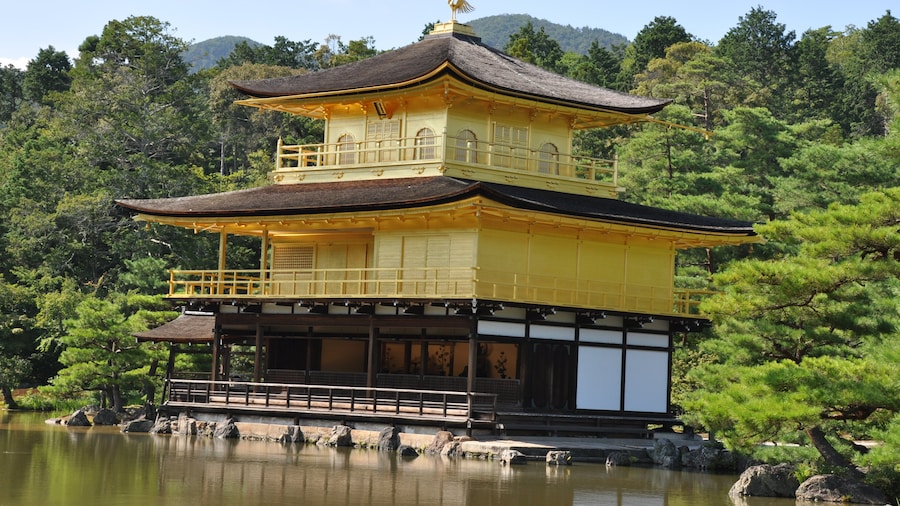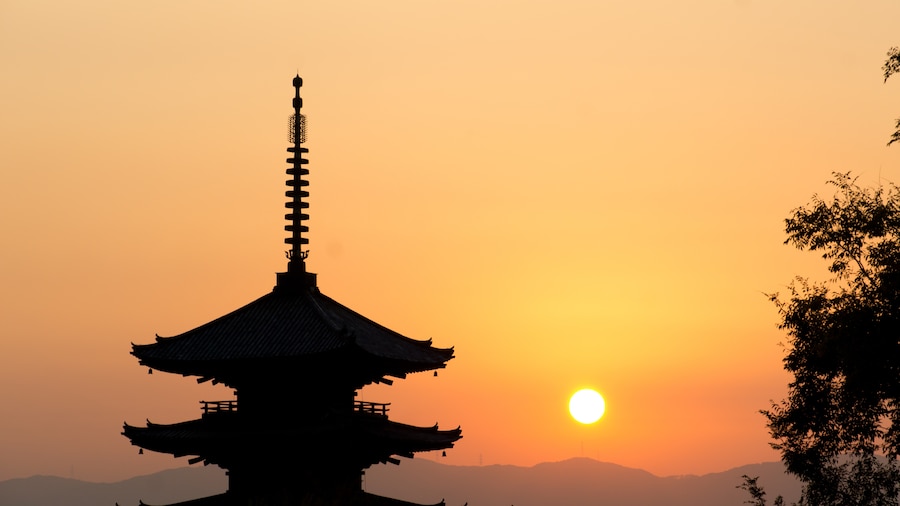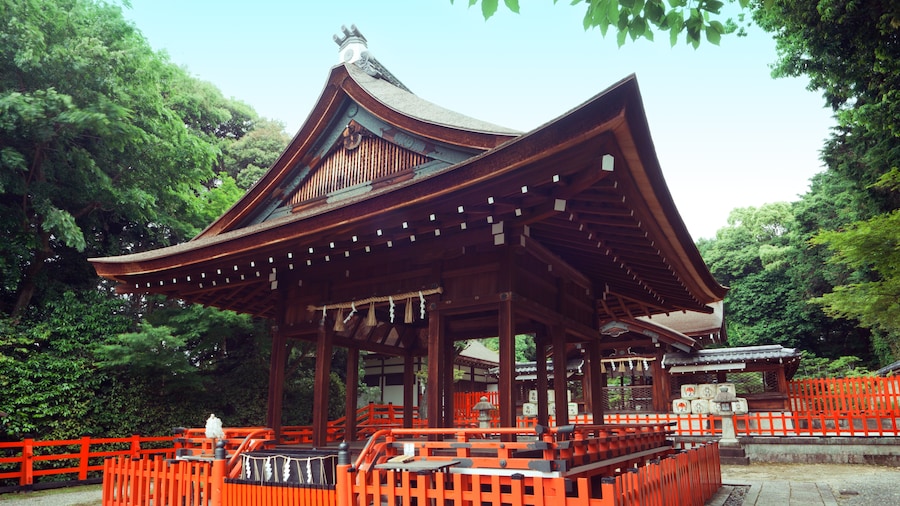This shrine was created in 947 to mollify a furious spirit. Now, students and tourists gather to soak in the ambience of its traditional architecture and gardens.
When politician Sugawara no Michizane was exiled from Japan, various natural disasters were attributed to his vengeful spirit. Hundreds of shrines were set up across Japan out of fear, and the Kitano Tenmangu Shrine is considered one of the most important. The sanctuary is home to fascinating Japanese buildings and gardens full of around 2,000 colourful trees. There is an annual tea ceremony and monthly flea market.
Arrive in the fall leaf season in the months of November and December to witness the changing colours of the maple trees among the shrine’s evening lights. Michizane’s favourite tree, the plum tree, grows throughout the grounds. Visit the main shrine, around which grow pine trees. Gaze at the sculpted suns, moons and stars on the Sankomon Gate. Visit the Treasure House to learn about artifacts such as ancient scrolls and paintings.
Attend the annual tea ceremony known as Baikasai, on February 25. Prepare to haggle at the flea market, held on the 25th day of every month. Hundreds of vendors sell plants, crafts and tools. If you feel hungry, do not hesitate to approach the many food stalls.
A famous poet and scholar in his lifetime, Michizane was deified after his death as the shinto god of scholarship. For this reason, the complex is particularly packed with students praying for academic success during exam periods. The shrine is open for visits daily from early morning until late afternoon. Admission is free for the most part, although there is a charge for entrance to the gardens.
The shrine is located adjacent to the Hirano Shrine in the north of the city. Take a bus from the main transportation hub, Kyoto Station. Buses run to the shrine from Imadegawa Station on the Karasuma Subway Line. Arrive at Kitano Tenmangumae bus stop. You can also walk from Kitano-Hakubaicho Station on the Keifuku railroad.


